We are halfway through 2024, and so far it has been a year of change and realignment in many areas to meet the challenges of the future. Cybersecurity, in particular, is a hot topic and preparations for the NIS2 directive, which will come into force in Germany in October 2024, are in full swing to meet the increased security requirements in many industries.
At the same time, new advances in artificial intelligence are being made almost daily, and we are looking for ways in which it can support us in our daily work. Tasks are not getting any smaller, they are constantly changing.
For more than 20 years, our User Conference has provided a platform for experts from a wide range of industries to exchange ideas and find inspiration. We come together to listen to compelling presentations, take away new insights, network, and share opinions. After all, the most important message of the day is that innovation comes from the sharing of ideas.
We are very pleased that nearly 150 participants accepted our invitation to the 23rd User Conference in Dresden on June 13, 2024 and spent an exciting day with us.
Insights Behind the Scenes of Code Generation: A Successful Start
At 9 a.m., the rows in the International Congress Center filled as Michael Jacob and Dirk Sauer, Managing Directors of Kontron AIS GmbH, opened the day with their keynote speech. Under the title "More than just software development – behind the scenes of code generation", they provided exciting insights into the company's growth and success.
They highlighted not only the increase in revenue, but also the higher proportion of women in the team and the successful integration of LUCOM. An important topic was employee happiness, as reflected in the positive reviews on kununu.
They also recalled last year's User Conference, which focused on cybersecurity, and emphasized that this topic has become even more important. With the new Cyber Resilience Act coming into force in March 2024, companies will have to meet high security standards for IoT devices.
They explained that 40 percent of software work goes into development and maintenance, which can only be managed with strong partners and automated processes. The old rule of "never change a running system" is outdated – automated updates and maintenance are now essential.
The Cyber Resilience Act may be as controversial as the General Data Protection Regulation (GDPR), but it is necessary to face these challenges. Meeting standards, such as the EU Data Act and the NIS2 Directive, is critical to increasing the security of IoT devices and being prepared for cyber threats.
The CEOs concluded: "The time to act is now," as demands continue to grow and cybersecurity challenges become more complex.
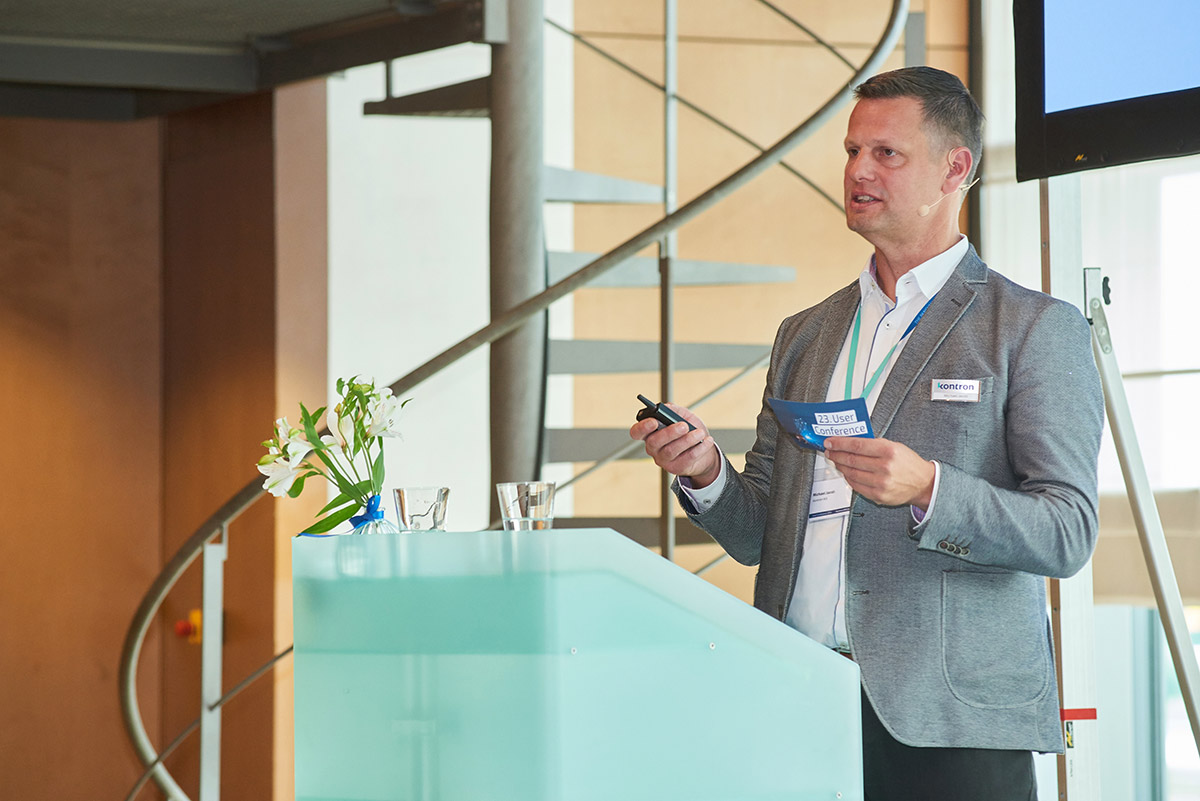
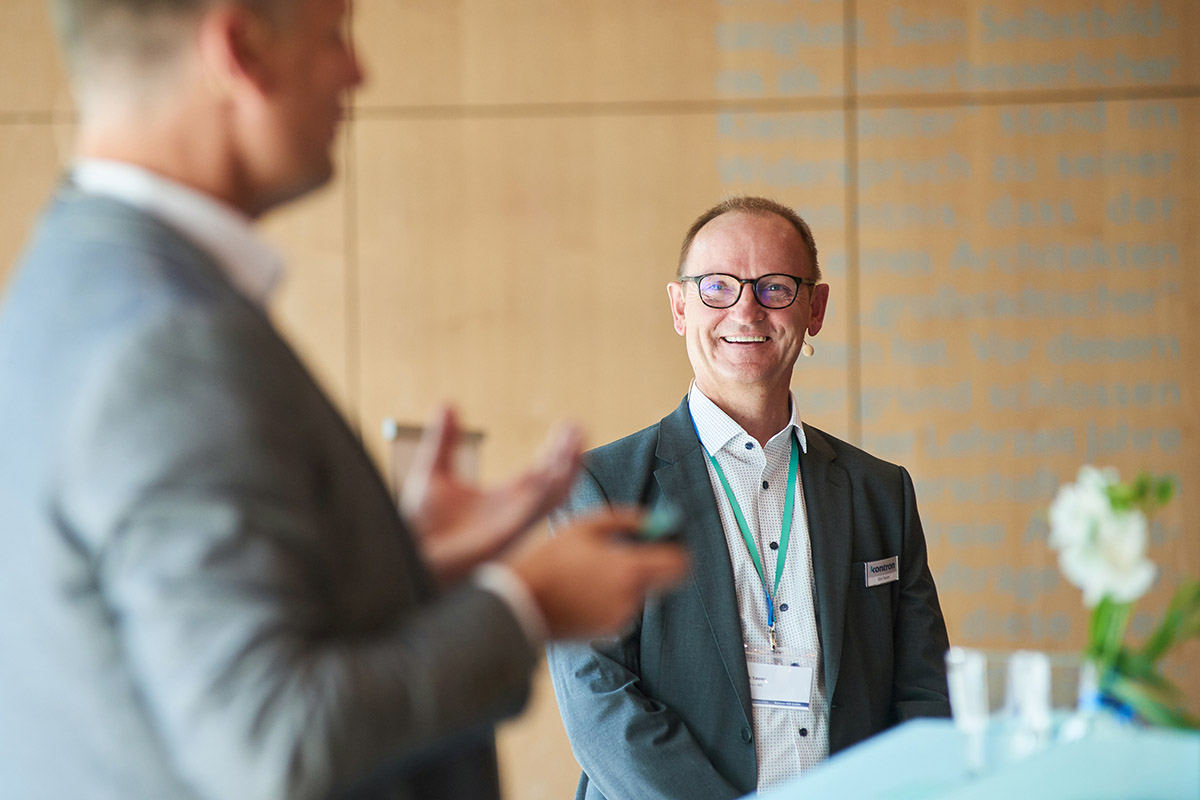
More than Just Code – Thomas Dreyer Provides Insights Into Product Development
Thomas Dreyer, Director R&D at Kontron AIS GmbH, presented the latest developments in software development. His presentation, "More than just code", highlighted current projects such as the ToolCommander® scenario, which includes multiple operator stations and extensive safety functions, as well as the development of FabLink®.
Another focus of his presentation was the EquipmentCloud®, which now has new multi-language and maintenance functionality. The use of AI-based response assistants and the introduction of the new KontronGrid Service Registry, which enables efficient distribution of Docker images and files, were highlighted.
Thomas Dreyer also addressed the challenges and solutions in the area of software development. AI tools such as code suggestions and code interpretation offer valuable support, especially for less experienced developers. Automated testing with Ranorex and script-based infrastructures for installing servers and IoT gateways were other topics.
Concluding his presentation, Thomas Dreyer noted that developers' tasks have become more diverse and complex. It is no longer just about code – the range of tasks and requirements has expanded significantly.
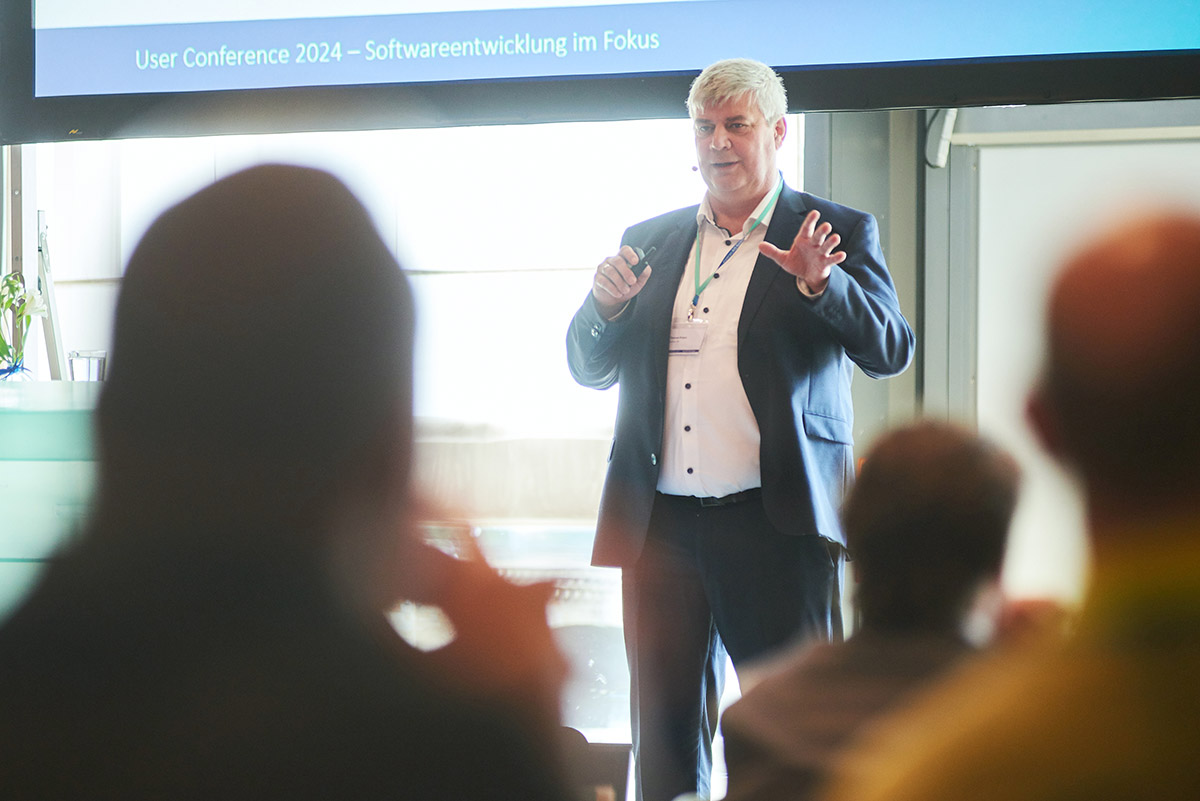
Increasing Regulatory Burdens for Manufacturers and Operators in Terms of Product Cybersecurity and Compliance – What Now? (ONEKEY GmbH)
Manufacturers and operators are facing increasing regulatory requirements for product cybersecurity and compliance. To gain deeper insights, we invited Alexander Hentschke from ONEKEY GmbH, a European platform for product cybersecurity and compliance.
Alexander Hentschke gave an insightful presentation on the growing regulatory requirements and highlighted that companies are faced with around 18,000 new vulnerabilities in software products every day. Automation is the only effective solution to meet these challenges.
He explained the far-reaching implications of the new Cyber Resilience Act (CRA), which was passed in March 2024. This law requires high security standards for connected devices and obliges manufacturers to actively monitor and report vulnerabilities to the European cybersecurity authority ENISA within 24 hours of becoming aware of them, regardless of their criticality rating.
The reporting requirements will take effect 21 months after the CRA enters into force, while the other provisions will have a 36-month transition period. Failure to comply could result in fines of up to €10 million and personal liability for managing directors.
To meet these requirements, ONEKEY offers AI-based security and compliance analyses that can be performed within 30 minutes. Alexander Hentschke presented the Compliance Wizard, a tool that assists organizations with self-assessment and guides them through the complexities of cybersecurity regulations. The wizard uses dialog-based templates to simplify the process and ensure that all requirements are met.
From Industrial Product to Automated Fab Tool – Equipment Control for the Semiconductor Industry (Weiss Technik Gmbh) (Weiss Technik GmbH)
Michael Walther of Weiss Technik GmbH explained the importance of specialized equipment controls for the semiconductor industry, emphasizing how these technologies are critical to the reliable operation of electronic devices under extreme conditions. Weiss Technik, known for its expertise in heating technology, offers products such as laboratory and conveyor ovens that are used in many industries.
Michael Walther presented projects using FabLink® and ToolCommander®, which play a central role in the automation and control of production facilities. FabLink® enables seamless integration and automation, while ToolCommander® simplifies the operation and monitoring of multiple equipment stations. Particularly impressive is the ability to update existing equipment with standardized software such as S!MPATI and to enable connectivity via SECS/GEM.
This successful cooperation has already proven its efficiency in various customer projects and contributes to the expansion of Weiss Technik's portfolio.

Automation Capabilities Management (ACM) and Tool Operation Specification (TOS) – Infineon's Management of Heterogeneous Requirements for Plant Automation (Infineon Technologies Dresden GmbH & Co. KG)
Torsten Gertler of Infineon Technologies Dresden GmbH & Co. KG explained the key aspects of Automation Capabilities Management (ACM) and Tool Operation Specification (TOS). These two concepts are crucial for the effective management of Infineon's diverse system automation requirements. ACM ensures that all machines within a production line operate accurately and reliably. This is achieved by clearly defining and continuously monitoring the requirements and performance characteristics of each machine. This ensures that each machine does exactly what it is supposed to do.
The TOS documents the specific requirements and operating conditions of each machine. It is the basis for automation and facilitates the integration of new machines into existing systems. The detailed documentation minimizes errors and speeds up updates to the host software.
Special attention is paid to cybersecurity and compliance with industry standards such as SEMI. This ensures that Infineon's production systems always meet the highest security and quality requirements.
7 Line Controllers in One Sweep – Upgrade to FabEagle® at 3 Locations During Ongoing Operations (SIGNATA GmbH)
Bernd Cordes of SIGNATA GmbH talked about the impressive changeover to FabEagle® at three locations, which was carried out without interrupting operations. SIGNATA, a leading automotive supplier for renowned brands such as VW, Ford and Porsche, faced the daunting task of integrating seven production lines with minimal downtime.
According to Bernd Cordes, the biggest challenge was to coordinate the changeover simultaneously at several locations and across different time zones. Thanks to a maximum downtime of only two days per line and seamless integration into the existing IT infrastructure, the project was successfully implemented. The changeover enabled SIGNATA to significantly optimize its production processes and sustainably increase efficiency.
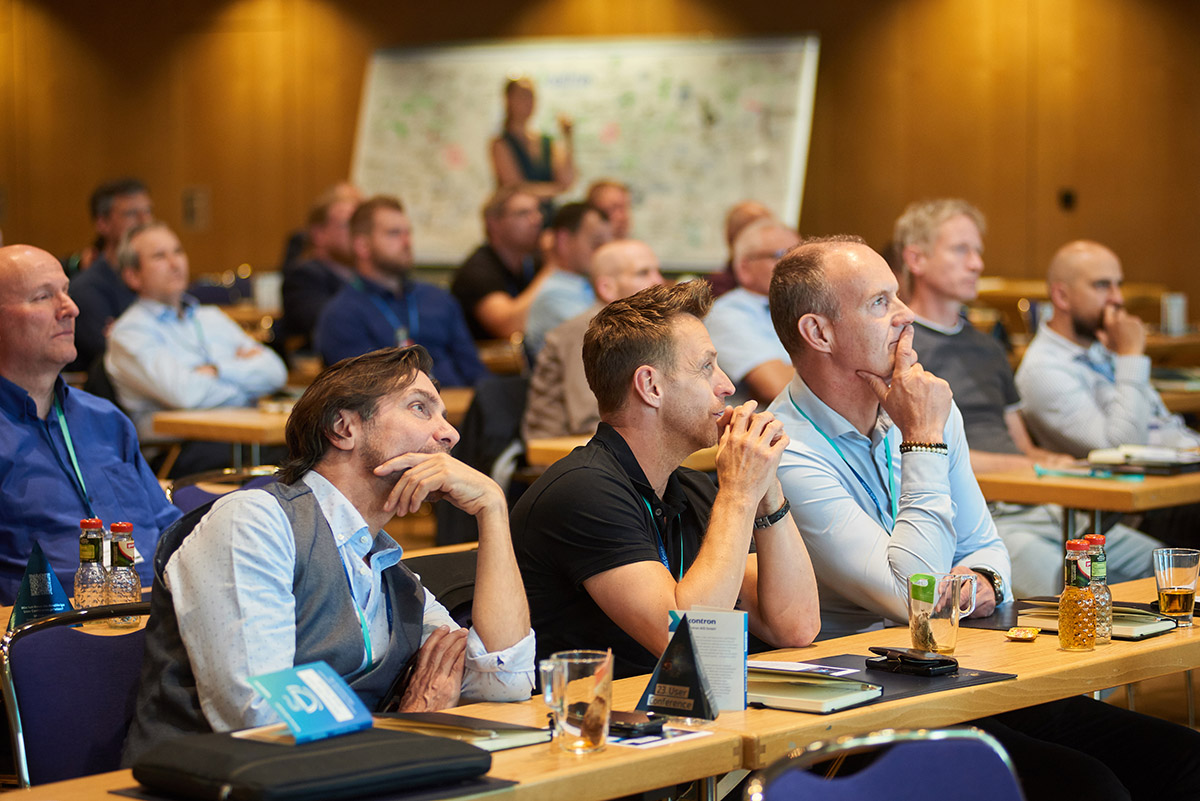
AI and Digitalization in Mechanical Engineering (RAMPF Production Systems GmbH & Co. KG)
Rafael Seifert of RAMPF Production Systems GmbH & Co. KG discussed the role of AI and digitalization in modern mechanical engineering. RAMPF manufactures machines for sealing, gluing, and conducting, which are used, for example, in toothbrush charging stations or door assembly carriers.
RAMPF has been using the digital transformation solution EquipmentCloud® as a customer portal for many years. This solution is not only used to store contracts, but also to simplify internal communication. All relevant information about the machines can be accessed immediately via an app or QR code, which significantly increases the efficiency of daily work.
One of RAMPF's key projects is the "Project Cockpit", a monitoring tool that provides Key Performance Indicators (KPIs) and transparency on machine performance. Production managers can use it to monitor the condition of machines and react proactively to problems. Another highlight is the Digikleb research project, which increases productivity through improved defect detection and the use of digital twins.
Finally, Rafael Seifert presented KIDEX, an AI-based tool that acts as a dispatch expert. This tool does not replace humans, but supports them in resource planning and learns from past conflicts to optimize future proposals. These innovations illustrate how AI and digitalization can revolutionize mechanical engineering and increase efficiency and quality in production.
We Take You on Our Digital Innovation Journey (ruhlamat GmbH)
Richard Stegmann of ruhlamat GmbH gave an exciting presentation on his company's digital innovation journey. With a wink, he described the journey as "random adventures", as digitalization often brings unexpected challenges. He asked the central question: Why do many companies still struggle with digitalization?
Ruhlamat, an expert in special machine engineering, has noticed that the demand for new machines is declining, while retrofit solutions and the adaptation of existing systems are becoming increasingly important. Customers are demanding a greater variety of end product types.
Richard Stegmann emphasized that a machine alone is no longer enough. Add-on digital solutions are essential to remain competitive. Yet only 20 percent of companies in Germany describe themselves as innovative, while 38 percent are not actively seeking innovation and risk being left behind. This could lead to falling behind in global competition and losing important market shares.
Spare parts and maintenance contracts are the first step. Richard Stegmann also raised the idea of delivering the digital services of the EquipmentCloud® with the machines and then removing them after a period of time to charge additional fees. He likened this to apps like Strava, which are free to use and then charge after a trial period.
A major obstacle at the moment is the perception of data sharing, which is often seen as more of a risk than a benefit. Richard Stegmann emphasized that communication makes all the difference: collaboration rather than competition is the key, and innovation thrives on sharing and breaking down silos.
Panel Discussion: Cooperation and Innovation in Digitalization
After the exciting presentations, Managing Director Michael Jacob and Sales Director Frank Geißler, who also acted as moderator for the day, invited Richard Stegmann (ruhlamat) and Rafael Seifert (RAMPF) to a panel discussion. A key topic was the importance of networks and cooperation. The participants agreed that close cooperation between machine manufacturers and end customers is crucial for the development of innovative solutions. Despite the risks associated with data exchange, it was emphasized that there is great value added. It was discussed how important it is to reduce fears and build a relationship based on partnership in order to be successful together.
Another topic was the shortage of IT professionals. With some 150,000 vacancies, this shortage is a major challenge. The panelists discussed how artificial intelligence (AI) can help fill this gap. In particular, Richard Stegmann emphasized that in addition to technical skills, the right mindset is critical to driving digitalization.
The discussion also showed that a culture of failure and a willingness to experiment are important factors. Rafael Seifert emphasized the importance of investing in new technologies and fostering a "fail fast" culture. This allows companies to quickly learn from mistakes and continuously improve.
Finally, all participants agreed that collaboration and open exchange are key to overcoming the challenges of digitalization and developing innovative solutions together.
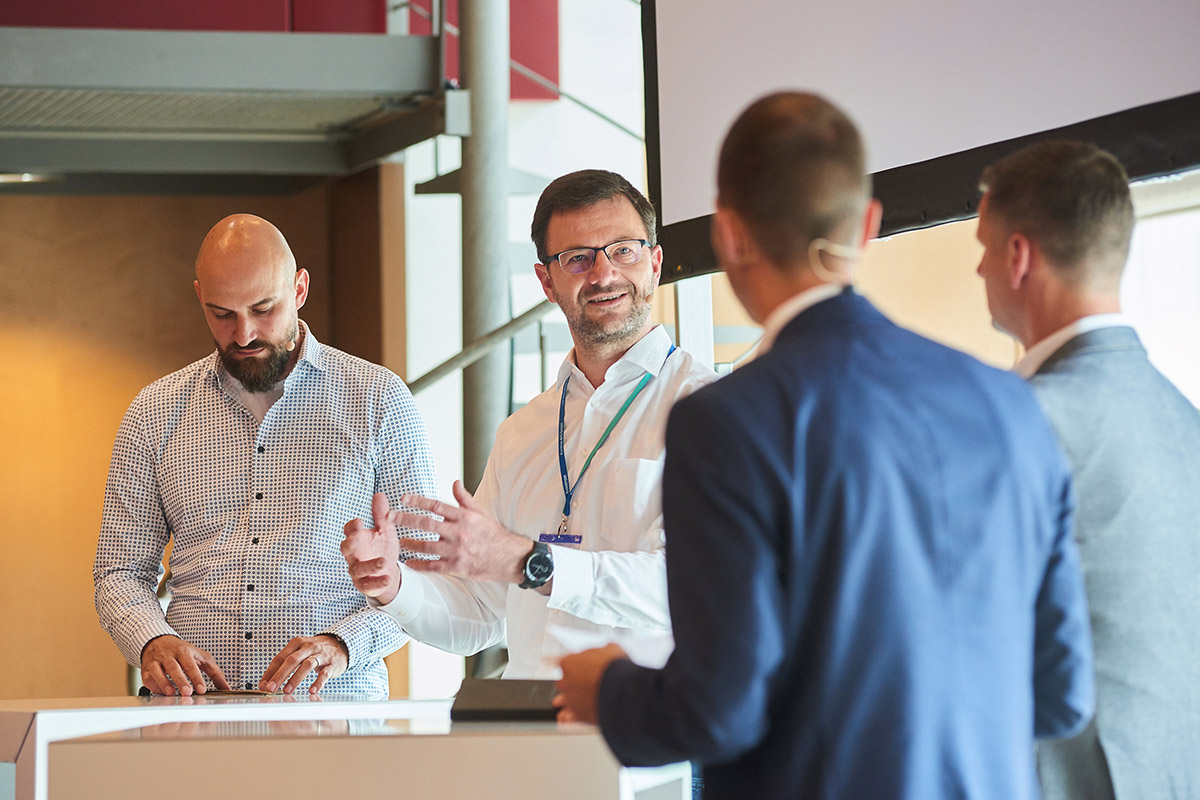
From Renewable Energies to Green Hydrogen via Data (Sunfire GmbH)
Dr. Frank Warkus of Sunfire GmbH spoke about the future of energy and the role of green hydrogen. Sunfire's mission is to enable a life without fossil fuels. The focus is on the production of green hydrogen using electrolysers that utilize renewable energy. These electrolysers provide the optimal solution for any industrial hydrogen application and can be used to produce green kerosene for aviation.
A particular highlight of his presentation was the introduction of the digital twin for production systems. By collecting and analyzing data, a virtual model of the system is created that simulates all characteristics and processes. This enables more precise planning and optimization of production, as well as continuous monitoring and improvement of system performance. Dr. Frank Warkus emphasized that the use of data is critical to making energy production more sustainable. With these innovative approaches, Sunfire is making a significant contribution to the sustainable transformation of energy supply.
Making Energy Transition Sustainable – Done Right with MES (Solarge Productions B.V)
Vignesh Natarajan of Solarge Productions B.V. presented a strategy for a sustainable energy transition using Manufacturing Execution Systems (MES). Solarge, a company that produces flexible and lightweight solar panels, uses innovative materials such as bio-based polymers and quartz. These solar panels have an 80% lower carbon footprint and are fully recyclable at the end of their life cycle.
Natarajan explained how the implementation of FabEagle®MES on their production line in the Netherlands is helping to make energy production more efficient and sustainable. The MES enables precise production control, complete material traceability and comprehensive data analysis. Of particular note is the use of heat maps to detect micro defects at the cell level, which significantly improves the quality of solar modules. With this solution, Solarge plans to expand its factory to a capacity of 250 MW and integrate new products and factories to actively drive the energy transition.
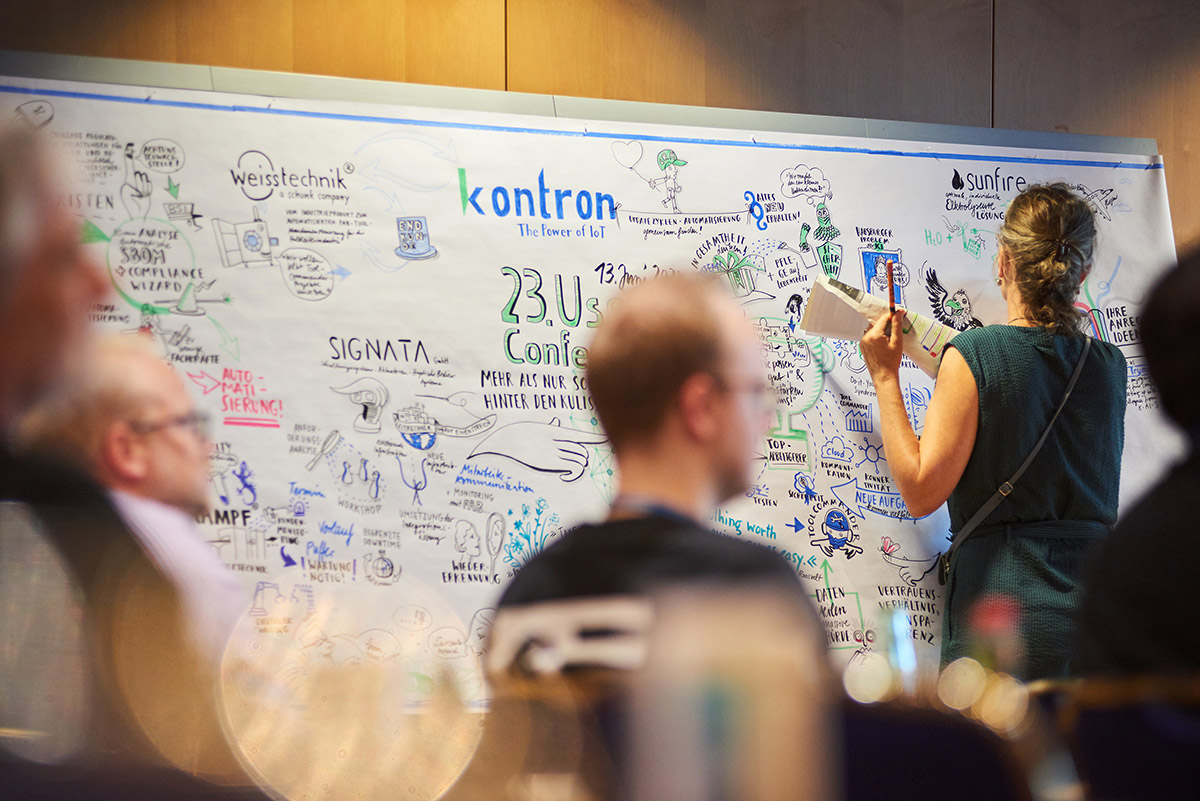
Successful End of the Conference Day
After the intensive conference program, the participants had the opportunity to get to know Dresden from different perspectives in the afternoon. Some enjoyed the impressive view from the Frauenkirche, while others explored the historic corridors of the Dresden Fortress on a multimedia tour and experienced 450 years of the city's history.
The day ended with an evening buffet and networking at the atmospheric Kasematten Dresden on the banks of the Elbe River. In this historical ambience, the discussions of the day were deepened and new contacts were made.
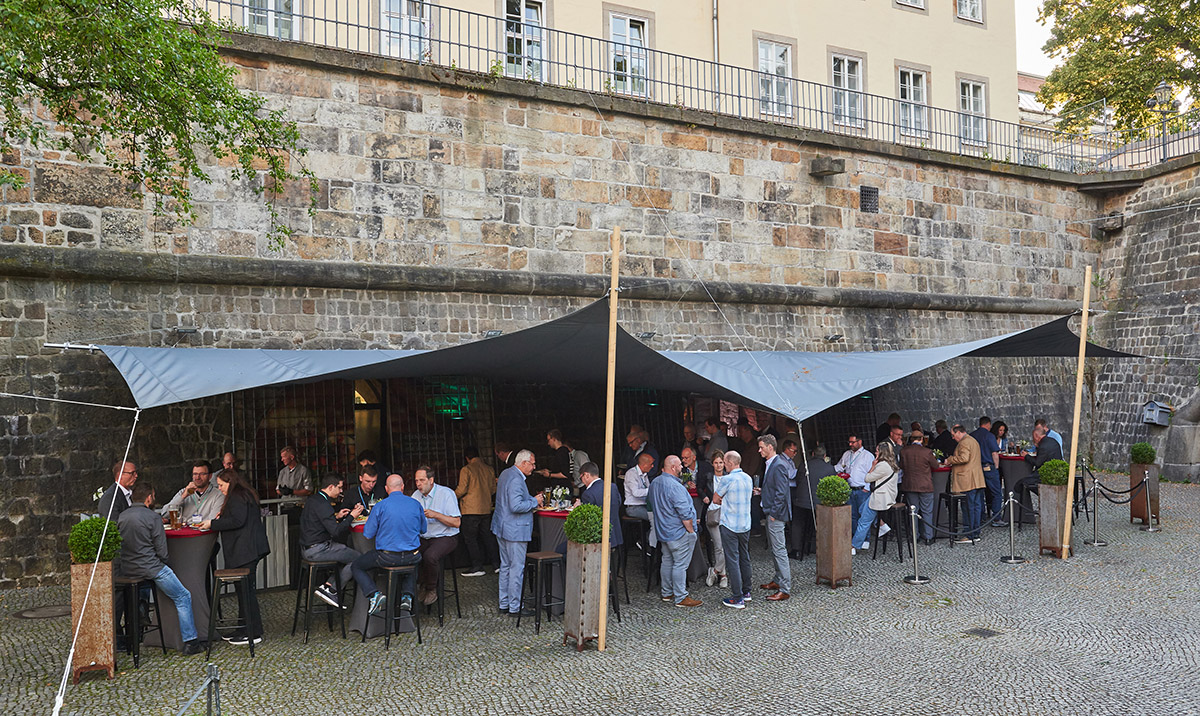
We look forward to seeing you at next year's User Conference. If you would like to join us, just send us an email. This will ensure that you do not miss anything and will be the first to know when the agenda is released.

